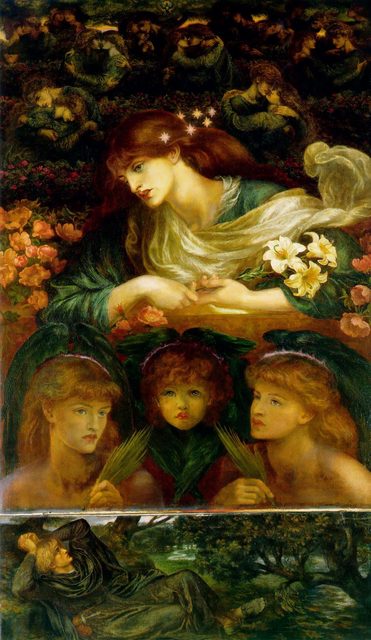The Hallé is one of Britain’s oldest orchestras and it is no surprise that they have championed many compositions at an early stage, before they became true classics.
The orchestra’s founder, Charles Hallé, put Wagner’s Tannhäuser overture on the repertoire (in the 1860s?). Under Hans Richter’s stewardship (1899-1911) the Manchester audiences would have heard quite a lot of Wagner. After all, Richter worked closely with the composer and conducted the first performance of the Ring Cycle at Bayreuth. Therefore the Hallé can claim that it has Wagner in its DNA, a fact that the orchestra’s current Music Director Sir Mark Elder is well aware of. Elder is an expert Wagnerian and member of a select group of British conductors that have conducted at the Festspiele Bayreuth. The orchestra recently performed Siegfried, thereby completing its presentation of the Ring Cycle while at the same time consolidating its reputation as one of the foremost Wagner orchestras in the land.

Prom 16 saw the Hallé present the original Dresden version (1845) of the Tannhäuser overture. The horns, clarinets and bassoons were incredibly pianissimo in the opening Pilgrim’s Hymn theme. The trombones were not much louder when they repeated the tune. With the lure of the Venusberg the volume increased, but Elder made sure that the bacchanal remained a fairly measured affair. Only when the profane and the sacred clashed was the orchestra let off its leash. When the pilgrims returned, hailing ‘salvation’s grace’, the murmuring violins were doing just that, murmuring, while the wind instruments were giving it some brass. This was the Hallé at its rich, harmonic best, replacing Wagnerian pomp with English understatement, but it was perhaps not the most theatrical of interpretations.
Debussy had a love-hate relationship with Wagner’s music. He was so aware that his first version of Pelléas et Melisande sounded too Wagnerian that he destroyed it and started anew. La damoiselle elué (1887-8) was luckily not ripped up by Debussy, despite the fact that there are hints of the Siegfried idyll and the spirit of Parsifal clearly inhabits this masterful cantata. I own three different recordings of the work, but had never heard it in concert and clearly didn’t really appreciate its celestial beauty. Inspired by a poem by the Pre-Raphaelite artist Dante Gabriel Rossetti Debussy composed ”a little oratorio, in a mystic, slightly pagan vein”, as he put it.

The work is scored for two sopranos, female chorus and orchestra (the piano version is also perfectly charming). Amazingly this accomplished work was Debussy’s first orchestral work to be performed (in 1893). The symbolist poetry seems to evoke the Victorian idea of medieval imagery. The blessed and chaste damozel, ‘leaning out from the gold bar of Heaven’, laments the brief time she spent with her lover. The narrator sets the scene, but musically has little to offer. It is the female chorus that has all the best lines and music. The combined forces of the Hallé Choir and the Hallé Youth Choir executed this to perfection. The subtly shifting harmonies would have confused some contemporary listeners, but shocking or incomprehensible it wasn’t (like the opera Pelléas). Harp, oboe, English horn, flute and the strings provide the most memorable colours and to me, this sounds like Art Nouveau set to music. The title role was sung by Sophie Bevan who took over from the indisposed Sabine Devieilhe at very short notice. After an initial, slight hesitation she was marvellous and the Hallé could hardly have been more supportive.
Igor Stravinsky’s The Song of the Nightingale takes its inspiration from Hans Christian Andersen’s story The Nightingale. Stravinsky set out in 1908 to compose an opera but he didn’t get very far because he received a commission from Diaghilev in Paris to write The Firebird. This made the critics take notice of the then-unknown composer. Two more ballets, Petrushka and The Rite of Spring followed resulting in fame and fortune. In 1913 Stravinsky took up the opera project again and Le Rossignol(The Nightingale) was premiered just before WWI with the singers in the pit and Ballets Russes’ dancers miming and dancing the roles! After the war, Stravinsky created a symphonic poem with music from the opera. I am not sure how much of this music I would have appreciated if I hadn’t read a synopsis of the story provided in the programme. It helps to know what characters the instruments represent, but the music is a bit too descriptive for my liking and gets tedious. The musical ‘Chinese’ references sound comical because they are pure cliché. But there are ample opportunities for various soloists in the orchestra and they execute their solos well.
After this not wholly satisfying symphonic poem, we were treated to two short Russian folksongs sung by the Hallé Choir. The reason being that these songs are quoted in The Firebird. This was followed by the third version of the suite (1945) which has some added extras but also boasts a tighter orchestration and a stripped-down orchestra. Today the Firebird doesn’t sound as exotic (the eight-note diminished scale) as it originally did, but the magic of this music is that it hasn’t dated in any way. Surely this music appeals to anyone (?)almost everywhere, and particularly when it is performed so well. The soothing horn solo that signals the end of the berceuse and the start of the vibrant finale summed up perfectly, in 40 seconds or so, why the Hallé at the moment is such a wonderful orchestra that doesn’t seem to be able to set a (dance) foot wrong. I can’t recall that I have heard The Firebird performed better anywhere and this is a Prom I will revisit in the BBC Prom archive.



